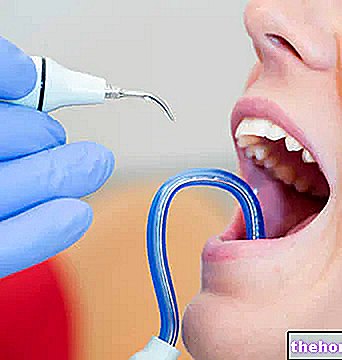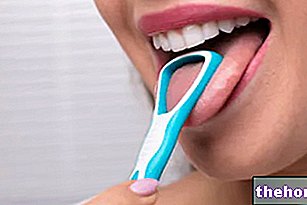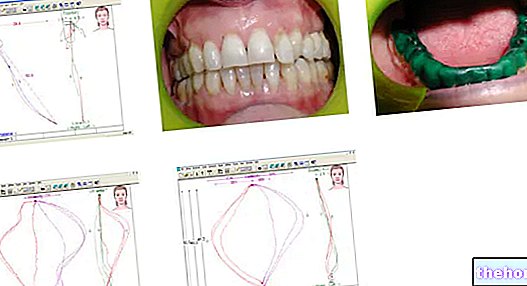The first signal that our body sends us is the change in color in the enamel which loses its natural shine becoming more opaque. This feature generally goes unnoticed in the eyes of the less experienced.
By the time the caries reaches the dentin, a dark groove is clearly noticeable, containing a stagnation of decayed material (food and disintegrated dental tissues).
When the patient begins to experience toothache, it means that the cariogenic process has gone deep into the dental pulp. The pain is therefore due to the complication of primary caries.
As the caries evolves, sinking into the dental pulp, the patient's clinical picture tends to precipitate. In such circumstances, caries causes the characteristic symptoms of the pathology:
- Bad breath;
- Hypersensitivity to hot, cold, sweet, salty and sour;
- Pain in the tooth that radiates into surrounding tissues.
If, on the other hand, it affects the gumline, caries can give rise to unpleasant chronic gingivitis.
When neglected, the carious lesion leads to inflammation of the pulp (pulpitis), evolving into an abscess up to the total destruction of the tooth and its root. Among the complications of dental caries, cysts, granuloma, gingivitis, pulp gangrene and, sometimes pyorrhea.
In these cases, a simple filling is no longer sufficient and the dentist will have to remove the infected pulp by filling the root canals of the tooth (devitalization).
, assiduously devouring enamel and dentin, they procured the inauspicious tooth.

Caries necessarily requires dental intervention: in fact, dental tissues cannot heal spontaneously since they do not possess regenerative capacity.
The filling cannot be performed when, having reached the dentin, the caries begins its unstoppable demolition process even in the dental pulp. In similar circumstances, the caries has given rise to pulpitis, a serious infection of the pulp tissues which, in order to heal, requires the devitalization.
In some cases, the caries evolves in a negative direction, giving rise to a much more serious lesion than pulpitis, which can be a granuloma or a dental cyst. In the first case, the infection becomes purulent and confines itself to the gum, jawbone or pulp.
Antibiotic treatment, devitalization and apicoectomy are the most suitable interventions to reverse the pathology.
If the caries degenerates into a dental cyst, apicoectomy or drainage of the lesion are the most appropriate surgical practices.
In the most extreme cases, ie when the tooth is deemed irrecoverable, it is necessary to proceed with its extraction.
undoubtedly consists in putting into practice all the basic rules of dental prevention.
Adequate Dental Hygiene
Maintain thorough dental hygiene with a toothbrush, toothpaste, dental floss and mouthwash. To effectively clean your teeth, you need to:
- Brush them at least three times a day, immediately after each meal or snack;
- Use quality toothpastes;
- Alternate whitening (aggressive) toothpastes with more delicate toothpastes (to prevent wear of tooth enamel);
- Use dental floss at least once a day;
- Rinse your mouth with antiseptic and fluoride-enriched mouthwashes.
Proper Nutrition
Given that the development and proliferation of microscopic enemies of the teeth are favored by food residues that remain trapped between the dental elements, it is important to associate an adequate diet with proper oral hygiene:
- Limit as much as possible the intake of simple sugars such as sucrose and glucose;
- Also beware of complex carbohydrates;
- Avoid caramel, gummy bonbons or sticky foods, which adhere to the tooth like suckers, remaining long in the mouth;
- Chew foods well to strengthen teeth and improve their chewing function.
Dental Sealing
Dental sealing is helpful in preventing cavities from forming. The procedure involves the application of a special resin on the surface of healthy teeth and in excellent health, in order to protect the enamel from any future cariogenic processes.
Professional Dental Hygiene
The recommended recall for professional dental cleaning is every six months: dental hygienists suggest scaling every 6 months or, at the latest, once a year. Professional dental cleaning is extremely beneficial because, in addition to preventing tooth decay and gum disease, ensures the teeth an enviable state of health even in the long term.
Stop smoking
As we know, smoking is the enemy of the teeth and the oral cavity: the smoking habit is closely related to bad breath, yellow teeth and dental infections. For this reason, it is recommended not to smoke or, if you really can't stop, limit smoking, cigars and cigarettes as much as possible.
Periodic Check-ups by the Dentist
Very useful to surprise any infections that are still asymptomatic in the bud, such as caries in its initial stage.
Other in-depth articles on Caries
- Types of Caries
- Cavity
- Caries: causes and risk factors
- Caries and nutrition




























